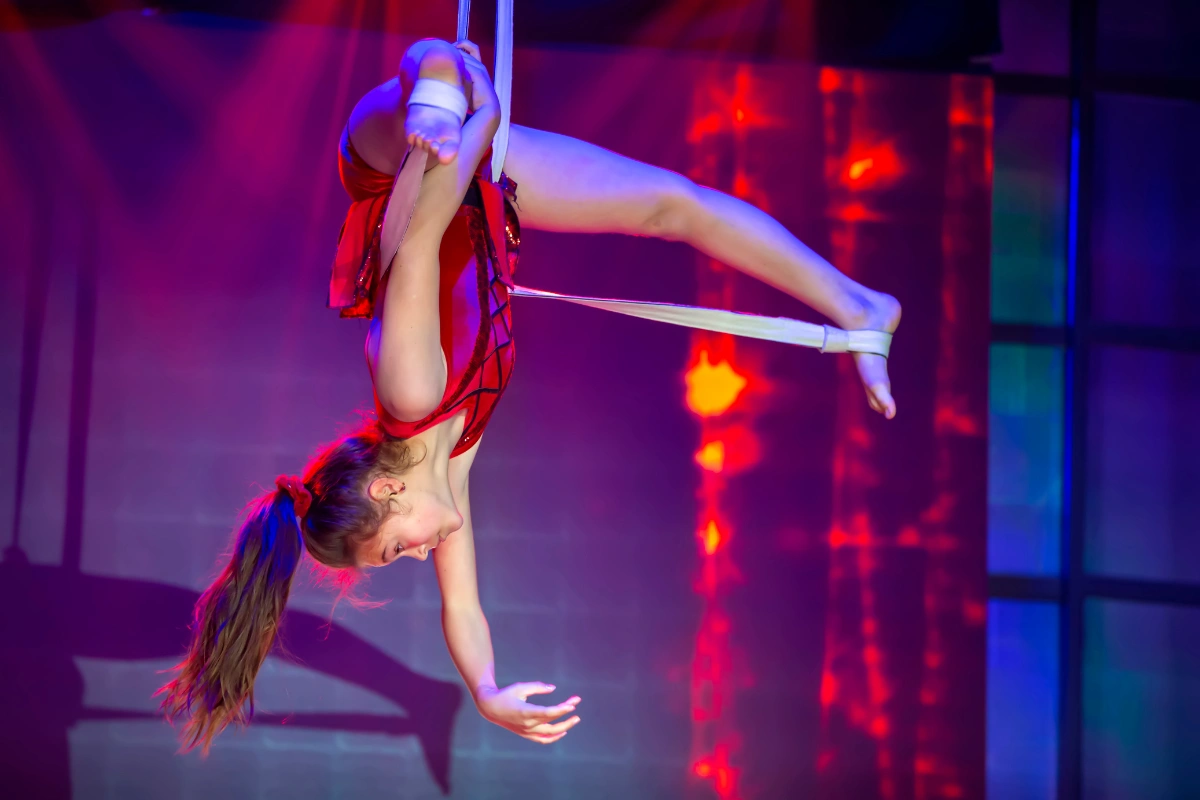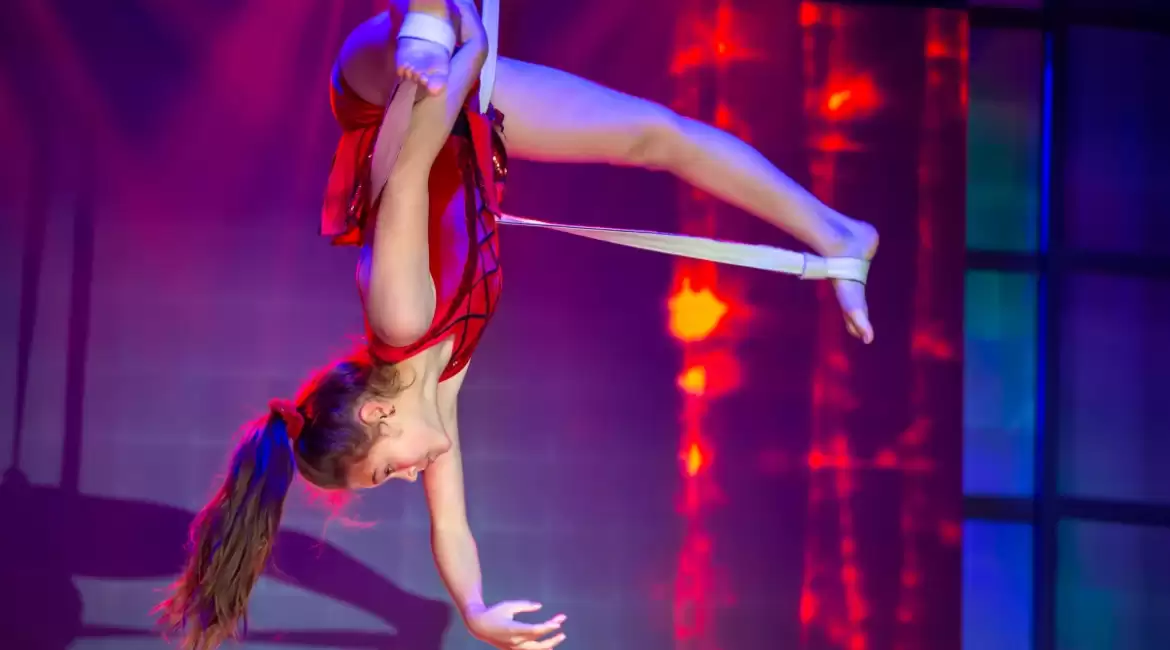Acrobatics, with its rich tapestry of physical prowess, artistic expression, and cultural significance, stands as a testament to the enduring ingenuity and resilience of human endeavor. Spanning millennia and traversing continents, the history of acrobatics unfolds like a captivating narrative, weaving together the threads of ancient traditions, medieval spectacles, and modern innovations. From the acrobatic feats adorning the walls of ancient civilizations to the dazzling performances of contemporary circus extravaganzas, the journey of acrobatics is a testament to the unyielding human spirit and the boundless possibilities of the human body. In this exploration, we delve into the depths of this storied tradition, tracing its evolution, examining its cultural significance, and celebrating its enduring legacy across time and space. Join us as we embark on a journey through the long and illustrious history of acrobatics.
What is Acrobatics?
Acrobatics encompasses a broad spectrum of physical activities characterized by dynamic, full-body movements that propel individuals through space. It is an intricate discipline interwoven within various domains such as gymnastics, diving, and dance, manifesting in forms like tumbling and an array of maneuvers including flips, somersaults, headstands, and handstands. Beyond its traditional manifestations, acrobatics extends to specialized branches such as acrobatic gymnastics, also known as sport acrobatics, which stands as a distinct competitive sport within the realm of gymnastics.
The essence of acrobatics lies in its adaptability, making it accessible to both genders and accommodating to diverse environments with minimal equipment requirements. Often practiced on a simple gym mat, a trampoline, or even in the confines of a backyard, acrobatics offers a versatile platform for enhancing physical strength and overall body conditioning, provided it is executed with due attention to safety protocols.

History
Western history
Acrobatic traditions trace back through the annals of time across diverse cultures worldwide, weaving through the tapestry of human history. In the Western world, glimpses of acrobatic prowess can be unearthed in artifacts dating back to ancient civilizations. For instance, Minoan art dating to circa 2000 B.C.E. showcases depictions of astonishing acrobatic feats, juxtaposed against imagery of mighty bulls, signifying the enduring appeal of physical agility and grace.
During the European Middle Ages, the courtly extravaganzas and festivities served as fertile ground for the flourishing of acrobatic performances, interwoven with musical harmonies, mesmerizing juggling acts, and captivating dramatic narratives. These spectacles not only entertained but also showcased the remarkable physical prowess and dexterity of the performers.
The mid-19th century marked a pivotal juncture in the evolution of acrobatics, heralded by groundbreaking inventions such as the flying trapeze in 1859. The daredevil exploits of individuals like Blondin and Farini, who astounded audiences by traversing tightropes suspended above the roaring Niagara Gorge, epitomized the audacity and skill inherent in acrobatic endeavors, quite literally elevating the art form to unprecedented heights.
Moreover, the proliferation of traveling circuses and the emergence of modern entertainment venues like Vaudeville dance halls provided newfound platforms for acrobatic expression, fostering innovation and pushing the boundaries of physical achievement.
Across the expanse of Western history, acrobatics has not only captivated audiences but also inspired artists to immortalize its allure on canvas. One notable example is Pierre-Auguste Renoir’s masterpiece “Acrobats at the Cirque (Francisca and Angelina Wartenberg),” a mesmerizing portrayal of two German acrobatic sisters. This iconic painting, now housed in the esteemed Art Institute of Chicago, serves as a testament to the enduring fascination with the artistry and athleticism of acrobatics in the realm of fine arts.

Eastern history
In the vast expanse of Eastern civilization, the rich tapestry of acrobatic traditions unfolds across millennia, ingrained deeply within the cultural fabric of societies. China, in particular, stands as a testament to the enduring legacy of acrobatics, with its roots tracing back to the venerable Western Han Dynasty (206 B.C.E. – 220 C.E.). Within this epoch, artifacts ranging from intricate brick paintings to vibrant murals and meticulously crafted pottery figurines bear witness to the awe-inspiring spectacle of acrobatic feats. Amongst these relics, depictions of headstands, handstands, and somersaults adorn the annals of history, serving as enduring testaments to the indomitable spirit and physical prowess of ancient practitioners.
Throughout the epochs that followed, acrobatics continued to evolve and flourish, mirroring the trajectory of its Western counterpart during the Middle Ages. The illustrious Tang Dynasty (618-907) served as a crucible for the refinement and proliferation of acrobatic arts, nurturing its growth and fostering innovation. Emblematic of this period’s artistic and athletic prowess is a remarkable lacquer painting discovered on a bow, now enshrined as a national treasure in Japan. This exquisite artwork depicts a scene of breathtaking acrobatic prowess, with a lone figure supporting a towering pole atop his head, while six individuals execute gravity-defying aerial stunts with consummate skill and precision.
Beyond mere entertainment, acrobatics held profound cultural significance, woven into the very fabric of village life and communal celebrations. Harvest festivals, in particular, provided fertile ground for the display of acrobatic prowess, serving as occasions for communities to revel in the physical feats and artistic expression of their performers.
Thus, the saga of Eastern acrobatics stands as a testament to the enduring resilience of human creativity and athleticism, transcending epochs and civilizations to leave an indelible mark on the cultural landscape of the East.

From Commedia dell’arte to Cirque Du Soleil
The evolution of acrobatics spans centuries and continents, traversing diverse cultural landscapes and artistic epochs. In the vibrant milieu of Renaissance Italy, acrobatics found its place within the colorful tapestry of commedia dell’arte, where daring feats of agility and strength were seamlessly woven into theatrical performances as tests of prowess and skill.
As the currents of time carried acrobatic traditions across Eastern Europe, it took on new dimensions, evolving into a showcase of unparalleled physical prowess and strength. Exhibitions of astonishing strength became emblematic of Eastern European acrobatics, captivating audiences with displays of sheer athleticism and power.
The paradigm shift came with the advent of the Peking (Beijing) Circus onto the Western stage in the 1970s, marking a seminal moment in the annals of acrobatic history. Chinese acrobats, renowned for their emphasis on grace and agility rather than sheer strength, challenged Western perceptions of acrobatics, infusing their performances with a sense of lightness and fluidity. Moreover, they introduced elements of humor, injecting a playful and whimsical charm into their acts that captivated audiences worldwide.
In the wake of this cultural exchange, the 1980s witnessed the emergence of Cirque Du Soleil, a revolutionary force that reshaped the landscape of contemporary acrobatics. Departing from traditional forms, Cirque Du Soleil imbued acrobatic routines with a narrative depth, weaving intricate background themes into their performances. Adorned in fantastical costumes and elaborate makeup, the acrobats of Cirque Du Soleil transcended mere physicality, embodying surrealism, symbolism, and character study to elevate acrobatics to the realm of high art.
Thus, from its humble origins in the streets of Renaissance Italy to the spectacular stages of modern circus extravaganzas, acrobatics has undergone a metamorphosis, evolving into a multifaceted art form that continues to captivate and inspire audiences worldwide.

Summary
As we draw the curtains on our exploration of the extensive tapestry of acrobatics, it becomes abundantly clear that this art form transcends mere physical prowess; it embodies the essence of human ingenuity, creativity, and cultural exchange. Across the vast expanse of history, from ancient civilizations to modern-day circus spectacles, acrobatics has evolved, adapted, and thrived, leaving an indelible mark on the cultural landscape of humanity.
Throughout the epochs, acrobatics has served as a canvas for artistic expression, a platform for showcasing athleticism, and a medium for storytelling. From the bustling streets of Renaissance Italy to the grand stages of Cirque du Soleil, acrobats have defied gravity, pushed the boundaries of physicality, and transported audiences to realms of wonder and imagination.
Yet, beyond the awe-inspiring displays of strength and agility lies a deeper narrative – one of resilience, collaboration, and cultural exchange. Acrobatics has served as a bridge between civilizations, a language spoken by performers and audiences alike, transcending barriers of language, nationality, and creed.
So, as we bid farewell to this journey through the annals of acrobatic history, let us carry forward the lessons learned – to embrace the extraordinary within ourselves, to celebrate the diversity of human expression, and to continue writing new chapters in the ever-evolving saga of acrobatics. For in the grand tapestry of human experience, acrobatics remains a shining thread, weaving together the aspirations, dreams, and triumphs of generations past, present, and future.


Leave a reply